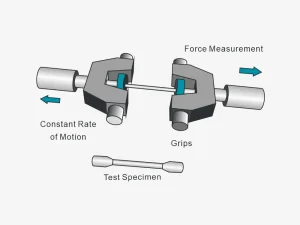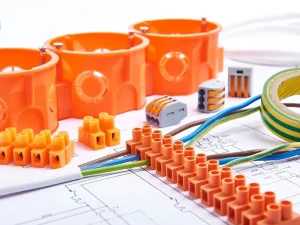Plastics are one of the most common manufacturing materials. They are versatile and functional. You can literally find it everywhere, from electronics to the aerospace industry. They are available in a variety of shapes and dimensions. But, do you ever wonder how someone shapes plastics and rubber? That’s where the injection molding technique turns a savior. That’s a simple technique that shapes different plastics and rubber items. However, the real question is: what’s the most crucial part? Selecting the appropriate molding material for creating products. It makes a significant impact on the overall process. If you are looking for the same, here is an injection molding material selection guide.
Importance of Plastic Injection Molding Materials

Before going through this injection molding material selection guide, let’s learn its importance. Why is it necessary to choose the appropriate material for molding?
As the name suggests, injection molding uses molds for the manufacturing process. In general, the entire process takes place in a custom injection molding machine. Here, engineers fill molds with molten materials that later achieve the desired shape. After heating and drying, the molded products are ejected from the molds. After the process, different industries, like automotive and chemical, use the molds for their particular purposes.
The choice of material determines the performance, process duration, cost, and production. The properties of the material further react with the product. Thus, it is important to balance everything. Now, let’s see how you can do that.
Material Selection for Injection Molding
Now, let’s come straight to the topic. How do you select the right substance for injection molding? Here are a few chemical properties that you must consider:
Tensile Strength

Tensile strength is often measured in PSI, and it is the stress a material can withstand. If you are seeking a product for outdoor use, it should have high tensile strength. High tensile strength ensures that the material lasts long, even in rigorous commercial uses.
Flexural Modulus
It is the measure of the material’s rigidity when bent. You can choose the one that suits your needs. For example, if you are seeking moldable parts, go for low flexural modulus and vice versa. A higher flexural modulus indicates that the material is less likely to bend under stress. It is perfect for applications where you are looking for stability and stiffness.
Electrical Insulation

Described as the resistance of a material against the electric current. In general, injection molding materials with electric insulation are perfect. It adds a safety and protective layer. Not only does it give material durability, but it also lasts under every circumstance.
Temperature Resistance
How strongly can the material withstand temperature extremes? You need to ask and measure this before deciding on molding material. Temperature resistance is a significant factor that determines the material’s properties. In general, engineers prefer materials with high-temperature resistance that can withstand extremes. This ensures that the product doesn’t lose its properties when exposed to uncertainties.
Chemical Resistance
How does the material withstand chemical interactions? Injection molding products are often exposed to different environments. Thus, it is important to choose a material that is not even inert when exposed to chemicals. Even under the influence of harmful chemicals, the material must stay inert. It ensures the safety and efficacy of product consumers.
FDA Compliance
FDA, or Food and Drug Administrator, has set different rules to ensure human health. Thus, if you are looking for a material that will directly or indirectly relate to health, consider FDA approval. It eliminates the chances of product failure or market complaints at a later stage. Especially for medical devices, always select a material that meets FDA compliance standards.
Cost and Pricing
Lastly, consider if the material fits your budget requirements. There are different luxury and affordable options available in the market. You can choose the one that suits your product. However, here’s a quick piece of advice: never compromise quality for the sake of budget or cost. Always choose a material that blends cost factors and quality.
Injection Molding Material Selection Guide
Rather than considering all factors, you can simply learn molding material properties. It will help you learn which is appropriate for you. So, let’s keep it simple. You can either choose rigid plastics, rubber, or elastomers. Here’s the list:
ABS
ABS is one of the popular molding materials. It is perfect if you are looking for low cost and high resistance. Plus, the material features high tensile strength. It is ideal for the automotive industry. ABS has high heat resistance that can produce shiny parts. Moreover, the material is scratch-resistant, which makes it perfect for outdoor applications.
LDPE
LDPE, or low-density polymer, is made from ethylene. It’s one of the resilient thermoplastics with high chemical resistance. Plus, the material is flexible enough to accept every shape and detail. If you are looking for accurate dimensions and affordability, choose LDPE. Even if you place a bulk order, the bill will still fit your budget. In general, the applications of LDPE include toys, food containers, and medical parts.
HDPE
HDPE is a high-density polymer. As the name suggests, it has high tensile strength that produces tough and rigid parts. Besides, HDPE is also a popular insulator, which makes it a safer alternative. And do you know what’s the best part? HDPE is one of the sustainable materials. That’s why it is popular for agriculture and medical products.
Polystyrene
Polystyrene, or PS, is a widely used amorphous thermoplastic. Made from monomer styrene, the material has high tensile strength. Its unique thing is its resistance to gamma radiation, which makes it versatile. With the right techniques, engineers can shape polystyrene in any dimensions and shape you want. PS is transparent and brittle, which makes it perfect for different household items. Common applications include disposable cutlery, food containers, and so on.
PET
PET is another popular injection molding material with excellent thermal capabilities. What’s more ideal about the material is that it is lightweight. However, being lightweight doesn’t mean that you don’t need to compromise on strength. The material can easily withstand the weather and chemical extremes. Plus, the material is glossy! You can dye it in the desired colors to reflect the desired appeal. The common applications of PET include capacitors, bottles, and recording tapes.
Polyethylene
Polyethylene is lightweight yet durable and widely used in injection molding. It is impermeable and derived from petroleum. It resists chemical exposure and extreme pressure. The best part is that it is recyclable, which makes it a sustainable choice. Polyethylene is commonly used in garbage, packaging, food packaging, bottles, etc.
PPS
PPS is Polyphenylene Sulfide, a semicrystalline thermoplastic molding material that offers dimensional stability. Its fire and electric resistance make it perfect for different purposes. You can find PPS parts in electronics and automotive. The material has high tensile strength and heat deflection, which increases its wear and tear.
PVC
If you are looking for an elastomer molding material, you can think of PVC. Produced from vinyl chloride, PVC is highly chemical resistant. Additionally, PVC is UV-resistant and can be easily shaped into different sizes. Plus, the material is machine-compatible and adapts to different tools and techniques. It fits perfectly with all injection molding materials. The weather-resistant, corrosive properties and high tensile strength make it perfect for construction and medical applications.
TPV (rubber)
Many people wonder if rubber can be injection molded or not; however, that is not even a question. Rubber is popular for its durability and is the best injection molding material. TPV, or thermoplastic vulcanizates, is an artificial rubber kind. It is produced from a combination of elastomers and thermoplastics. The material features good chemical and temperature resistance. However, engineers also prefer the material for low-temperature performance. The best part is that TPV is lightweight and is also easy to process and redesign. The general application of TPV includes tires, industry parts, and gaskets.
TPE
TPE is another thermoplastic elastomer that is popular for its versatility. Because of its similar characteristics, it is often used as a rubber alternative. It has significant tensile strength and heat resistance features that add to its strength. It is also tear—and abrasion-resistant, thus best for handles, seals, wires, and other components.
PSU
The semi-crystalline material Polysulfone, or PSU, offers excellent electrical resistance, high-temperature stability, and tensile strength that can withstand extremes. It is a good choice against cheap traditional plastics. Common uses include medical and electrical devices.
Quick Recap
We know that injection molding can be complex at times. However, you can have fun and quicken your process by choosing the right injection mold material. Molding selection is crucial since it determines the properties of the final products. Apart from the mentioned materials, there are endless options available. You can choose between the list or even explore other options. If you have a material in mind, check its properties and see if it matches your requirements. Also, while sourcing material, cross-check the quality and review the provider’s rating. Still have other questions or doubts? Don’t hesitate to drop us a line in the comments.

